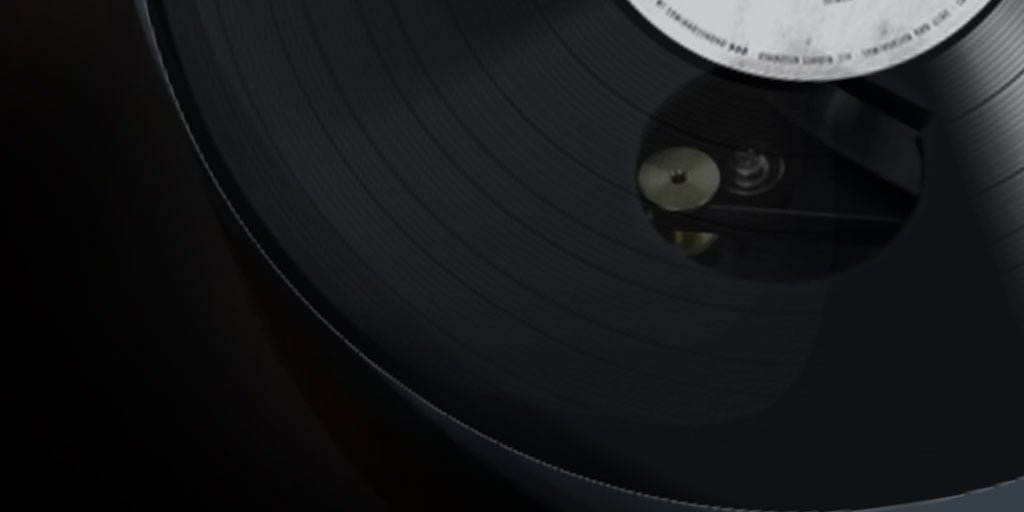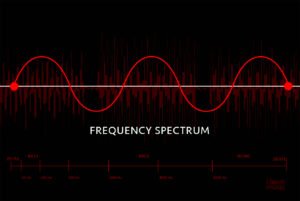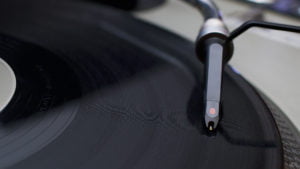There are different types and shapes of turntables available in the market; from which the Belt drive turntables have some of the most innovative designs.
So, WHAT IS A BELT DRIVE TURNTABLE?
The term “Belt Drive” accounts for the Drive Belt used in the device.
In Belt Drive turntables, the motor that rotates the platter is placed off-centre and connected to the platter via a drive belt.
Mechanics
The Record player is an instrument that converts music stored on a vinyl record into sound. A needle bounces on the contours of the record picking vibrations through the stylus, converting the same to an audio signal. This audio signal is amplified and heard through a speaker. The mechanics of how this happens in principle is standard for all modern turntables.
Here we understand the distinguishing parts of the belt drive and different from other modern record players that is the mechanics of how the platter rotates.
Understanding the mechanics of a belt turntable is quite simple. A belt helps the platter to rotate as it connects the platter to the motor.

Belt Drive Motor:
The motor rotates the platter converting electrical energy into kinetic energy. Initially, DC servomotors were used. Later, upgraded to Helical armature motors to reduce noise. The motor is placed away from the platter and the stylus to reduce any noise that the motor’s moving parts may create.
Platter in Belt Drive:
It is the most distinguishing part of the turntable that you will notice first when you take a look at any turntable. It is a solid disk-like platform that holds and rotates the record. Platters are normally heavy providing more stability, though cheaper and lighter platters are now available based on improvements in design and technology.
Belt:
The Drive Belt connects the motor with the platter and moves the gear to rotate it. The Belt is made of elastic material. And either wrapped around the outside edge of the entire platter or the inner platter that the outer main platter rests on. The belt is subject to wear and tear over a period of time and requires maintenance, though easy and cheap to replace.
If you want to dig deeper into the parts of turntables read: “Turntables- The Breakdown”.
DJ’ing on a Belt Drive?
If you are a Disc Jockey, you most likely will not use a belt drive. Low torque, high maintenance and delicate, these turntables are great for the precision of quality sound but not for performance. It can take a few seconds to get up to the full speed and is sensitive to touch which can often displace the drive belt. DJ’s prefer the Direct Drive Turntables.

Better in Sound quality. It MATTERS!
Belt Drive turntables are less noisy compared to direct drive turntables. The elastic rubber belt connecting the isolated motor acts as an additional shock absorber or filter that prevents vibrations from the motor allowing for superior sound quality.
For Vinyl enthusiasts where sound quality tops performance, the Belt Drive is preferred. Innovations in designs have reduced noise from external vibrations and have given rise to isolation devices as well as modifications to the turntable feet to deal with the slightest of external sounds. Some interesting designs & customised variants of belt drive turntables make for great functional show-pieces as well.
Belt Drive Turntables Style and Design
Belt Drive Turntables used by many audiophiles come in various styles and designs, some revealing the belt as part of the design concept. They are generally delicate and need to be kept in a dust-free environment as the belts are rubbed and easily attract dust, which would add to wear and tear. Beautiful as they look, considerable maintenance may be required.
You can check out Audio Technica’s Belt drive turntables here.
More information on the comparison of Direct Drive V/s Belt Drive is available in “Types of Turntables”.



















